GOLF: Kitakami Shimin
Written on July 11th, 2024 by Eliot Cochrane
IWATE: Kitakami Shimin
岩手県 - 北上市民ゴルフ場
True Golfing Spirit By Kitakami River
Nestled alongside the Kitakami River in Kitakami City, Kitakami Shimin is regarded as one of the most popular golf courses in Iwate. It may not have the crisp cut and manicured look of Roseland Country Club or views like Appi Kogen Golf Club, but Kitakami Shimin is one of the go-to places for those who truly love golf.
Relaxed staff who help new faces along the way and introduce them to like-minded people; the members and regulars alike make this a place to come back to again and again. Kitakami Shimin is a place for people who love golf to congregate and propagate a love for the game. It’s a course that is affordable enough for beginners to give it a try, and veterans love it for the excellent practice area that it offers.
Clubhouse
The clubhouse isn’t the main attraction. It isn’t a prefabricated building, but it isn’t much bigger than a few work sheds put together. There is just enough space for the front desk to check in, pay, get some snacks, and have a coffee. Next to that is the administrative area, and behind that is the kitchen and dining area. It’s small but has just the right amount of space to keep people flowing without much wait time throughout the day.
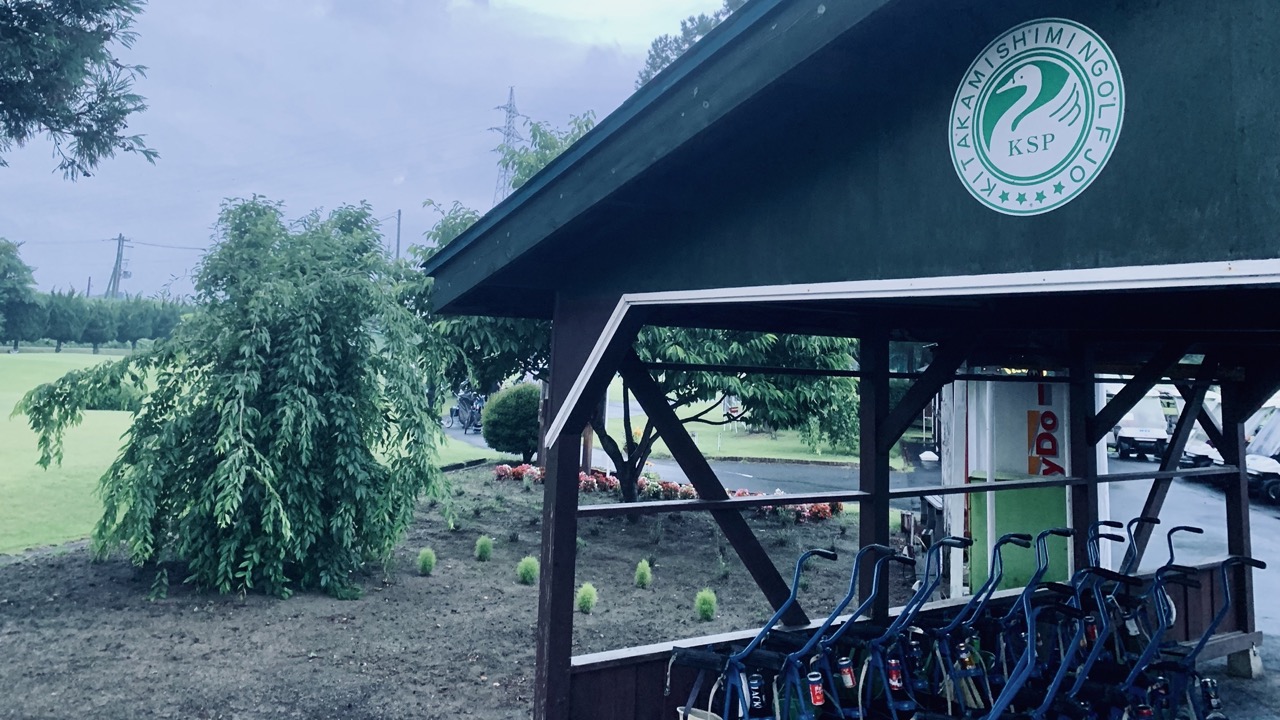 Photo: Shelter covering carts and bags at Kitakami Shimin.
Photo: Shelter covering carts and bags at Kitakami Shimin.
This is a no-nonsense clubhouse and golf course. There are no locker rooms or showers. Once you check in, you’re free to prepare for your round in the chipping area and on the putting green.
Pre-Round
Putting Greens
There is one central putting green with a slight dome shape. From here, many areas can practice breaks as well as straight putting. More often than not, this is also a place where people will chat with someone for a few minutes. Whether it’s a foreigner or a new player, the members and regulars are friendly to newcomers at the course. The putting green serves as that friendly beginning.
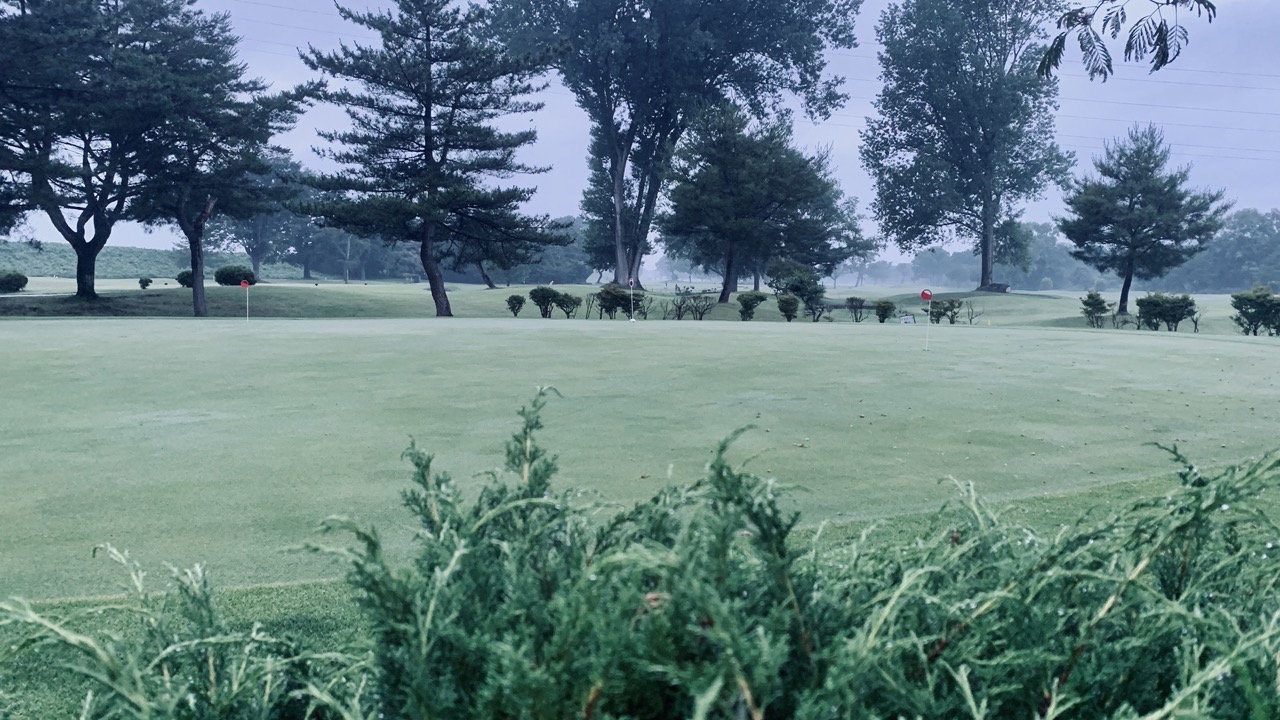 Photo: Practice putting green at Kitakami Shimin.
Photo: Practice putting green at Kitakami Shimin.
Players ranging from juniors to seniors will spend their time before and after rounds putting. Even some locals who may not be playing that day will take thirty minutes to practice. There is no fee for green practice besides a greeting to the staff. Many times the owner can be spotted checking the weather and ensuring any events that are ongoing are held to a high standard.
The Course
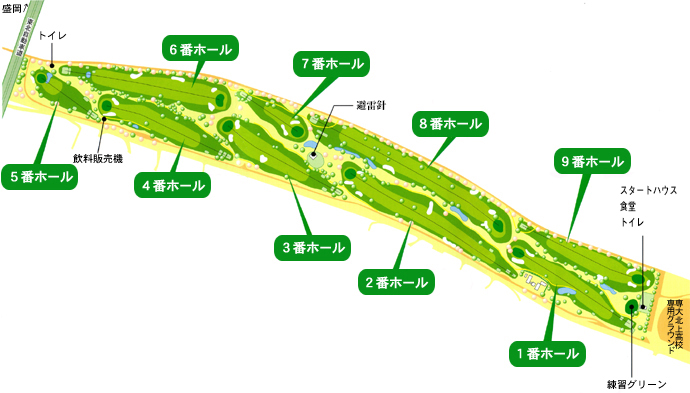 Photo: Layout of the course at Kitakami Shimin. Source: Kitakami Shimin
Photo: Layout of the course at Kitakami Shimin. Source: Kitakami Shimin
Course Statistics |
Kitakami Shimin is a 9-hole course. This means that groups will play the same 9 holes twice but from different tees each time. In the picture below, the information seen is…
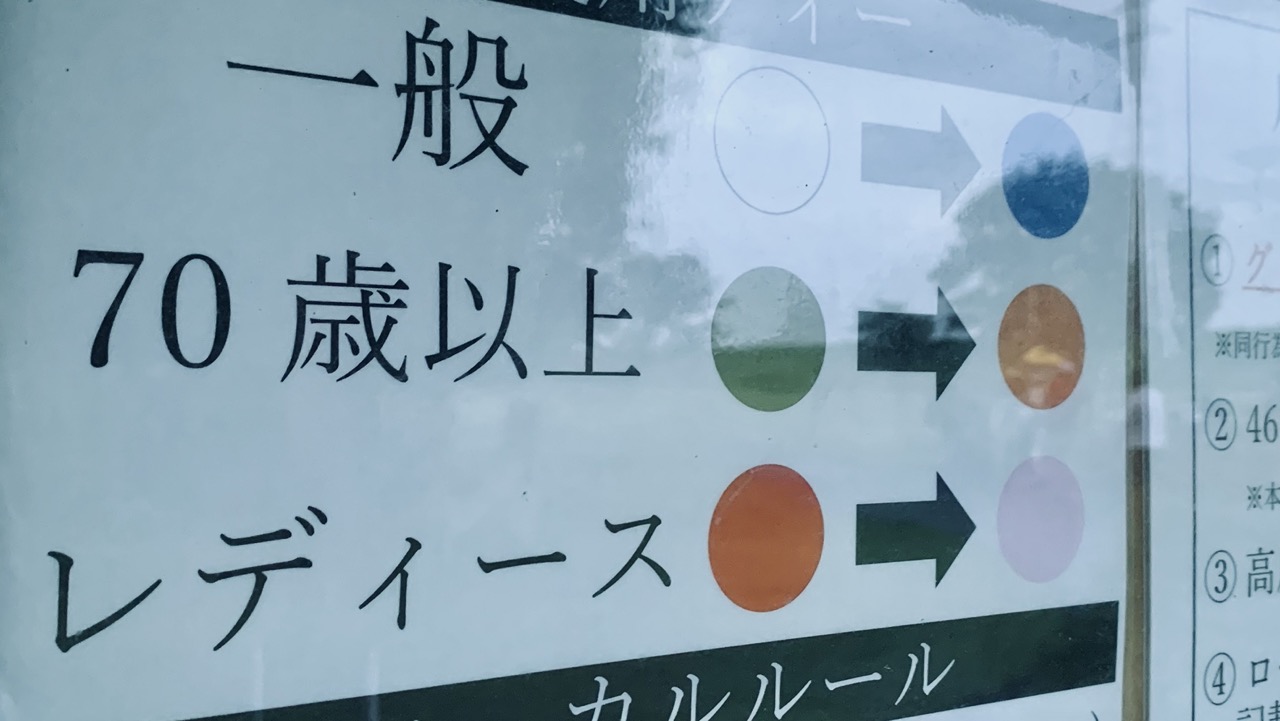 Photo: Tee rotation explanation at Kitakami Shimin.
Photo: Tee rotation explanation at Kitakami Shimin.
Tee Grounds
The tee grounds at Kitakami Shimin are some of the best for their value. The tee grounds are all lush and green; the par threes have their divot holes, but the tees are rotated enough that it never feels like there is a dead zone. All the par 3’s also have divot repair sand right next to the tees on any given day. For those who may not fill in divots, there are also people who fill in many divots during their wait.
The biggest drawback of the tee grounds is the forward tees. Sometimes they feel like an afterthought and are almost literally part of the rough in front of other tees that have just had the grass cut short. Some were not leveled and were just cut down as is. There are also a few holes where the designers tried to avoid having a line of tees all the way to the green or fairway, so they put some tee grounds on the sides of a given hole. But this also brings other hazards into the direct line that players from other tees don’t have to worry about.
Fairways
Piping a ball down the fairway always feels good. While the strokes gained say that there isn’t much of a difference in score, there is one hell of a dopamine rush! During the hot summer months, the fairways can get a little hard and drives roll a bit farther than usual. That feels good. Not so good? Landing in someone’s divot. Unfortunately, none of the cart riders bring divot repair sand to their ball. So if there are not many people walking the course with a bag in hand, it can get pretty spotty. Many of the regulars and members who walk the course make sure to fill their bag every hole and fill as many divots as they can, but they can’t get them all. This is not a problem just for Kitakami Shimin but many other places as well.
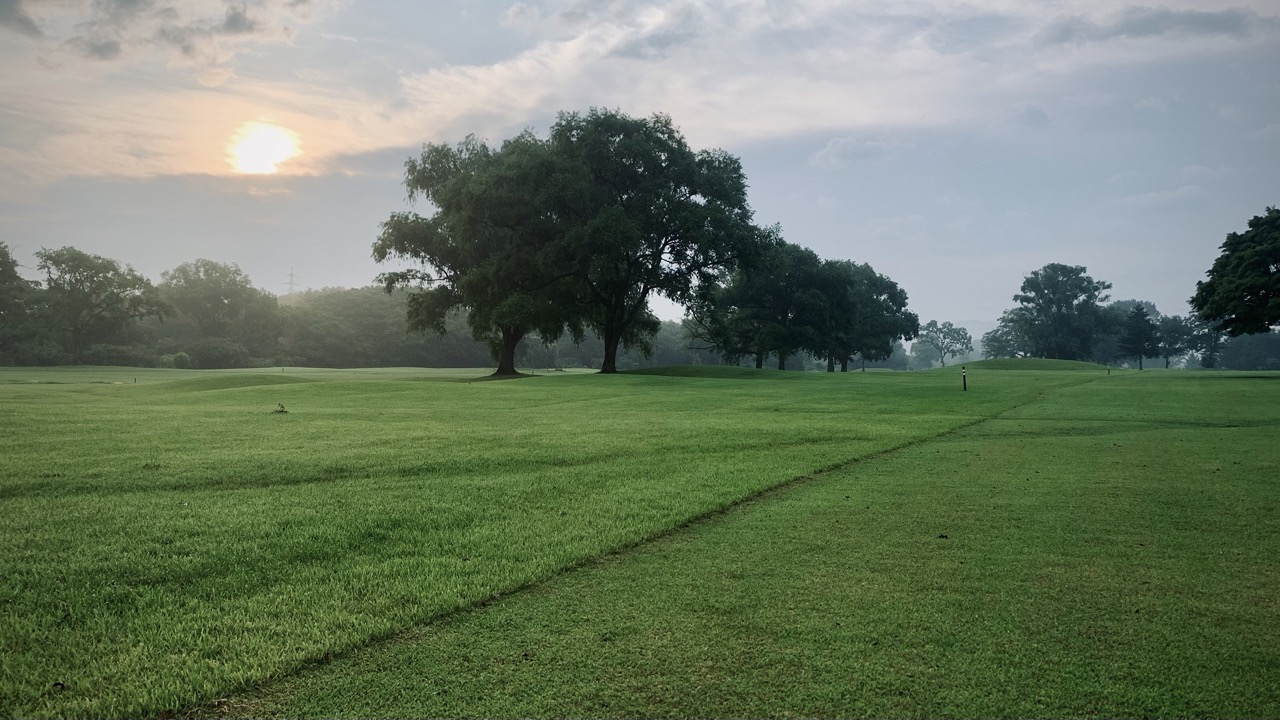 Photo: Fairway and rough on Hole 2 at Kitakami Shimin.
Photo: Fairway and rough on Hole 2 at Kitakami Shimin.
Divots aside though, the course is making a strong effort to improve water runoff to reduce any standing water or extremely damp and wet areas. Many holes in the past few years have had parts of the fairway or rough cleared for putting in piping and drainage underneath. Currently, many of those areas have been filled in and are marked with blue stakes for “Ground Under Repair” so any ball that lands in the area is a free drop.
That said, aside from the work they are doing to improve the fairways, what they have already is in great condition. Keep in mind, this is also alongside a river, so it can get fairly wet during the rainy season.
Rough
The rough is usually cut quite short, and the grass blades are strong. More often than not, the ball sits up nice and high. This rough is obviously left to grow longer for the club championship, but nine times out of ten the grass will be a manageable length and easy to get out of. It may leave the ball high enough to cause a lot of flyers. After getting to know the lie is likely going to produce a flyer, it is easy to compensate, but for the regular golfer, it may be difficult.
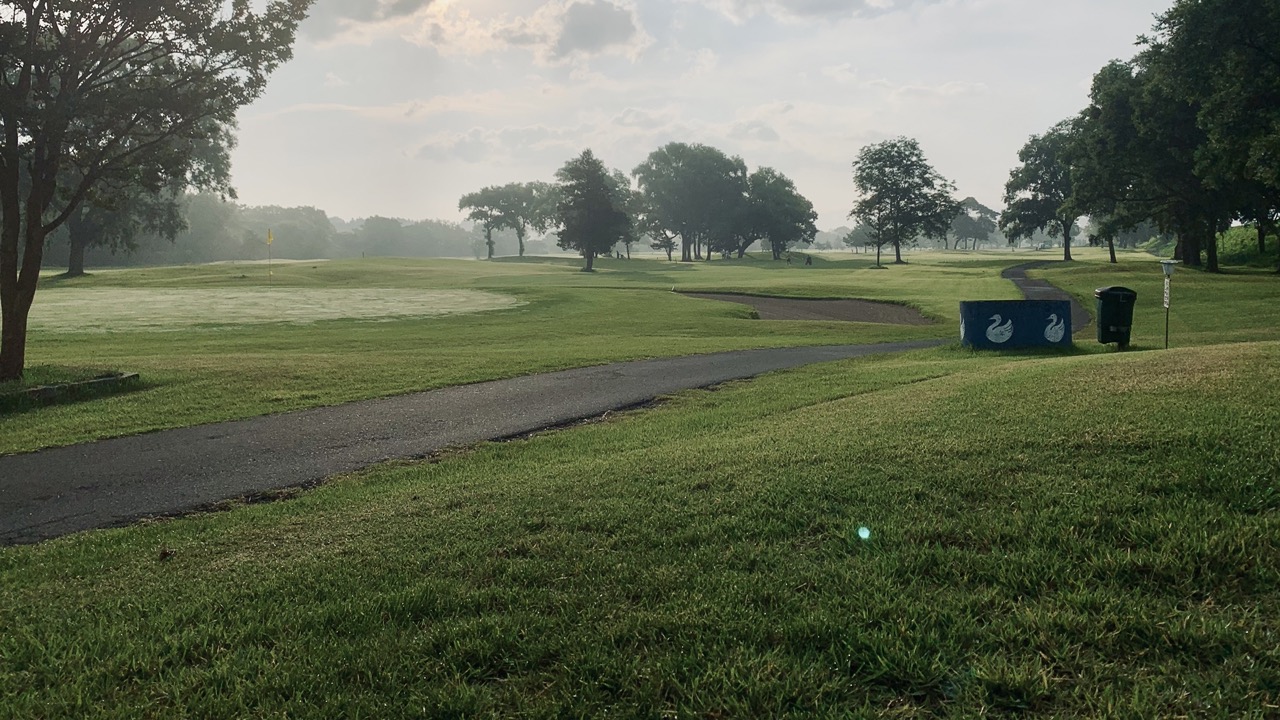 Photo: View of green on Hole 4 from tee ground of Hole 5 at Kitakami Shimin.
Photo: View of green on Hole 4 from tee ground of Hole 5 at Kitakami Shimin.
The rough though is really manageable and approachable for new golfers and also maintains the pace of play. No searching for lost balls because most of the time ball is visible all the way throughout the shot. There isn’t a heavy penalty by having to hack the ball out of the rough with a wedge just to get it out. The rough is largely manageable and not penalizing.
Bunkers
The bunkers have improved over the years. Talking with the members and regulars, over the past ten or so years, the number of members and interest in the course has risen. This gave Kitakami Shimin a larger budget for sand and bunker maintenance. What used to have pebbles strewn about is now replaced with fairly fine sand. It may not be the absolute highest grade, but it is consistent and easy to get the club through without getting a rock between the club face and the ball.
 Photo: Bunker on Hole 9 at Kitakami Shimin.
Photo: Bunker on Hole 9 at Kitakami Shimin.
The biggest problem facing the bunkers is standing water. Japan has a humid and subtropical climate so it’s not uncommon for sudden rain showers that overwhelm the drainage that was put in at the time of construction. The bunkers that do build up water seem to be commonly known and limited to about five over the whole course.
Greens
This is one of the few courses that on their website actually lists the type of grass used on their greens… bentgrass. This course is serious about its greens to the extent that they specifically monoculture their green to match their climate. The greenskeepers do a lot of work to keep the greens in good condition.
 Photo: Overlooking the green on Hole 2 at Kitakami Shimin.
Photo: Overlooking the green on Hole 2 at Kitakami Shimin.
The greens themselves are not overly complicated but can be deceptive depending on the condition. Also with bentgrass, if the greens are freshly cut there will be close to no grain. So players can focus on the slope and try to get a good measure of what the ball will do in the near future.
Marking
The marking at the course is easy to spot. Any of the colored markers are clear and visible without much dirt and grime. Any stakes marking out of bounds are mostly visible if not obscured by shrubs in front. And the tee markers are simple and clear. Alongside the holes are the distance markers, brown-colored with white bands. A single band means 100 yards, and then each additional band adds 50 yards up to 200 yards. The maximum yardage seen is a distance marker with three bands indicating 200 yards.
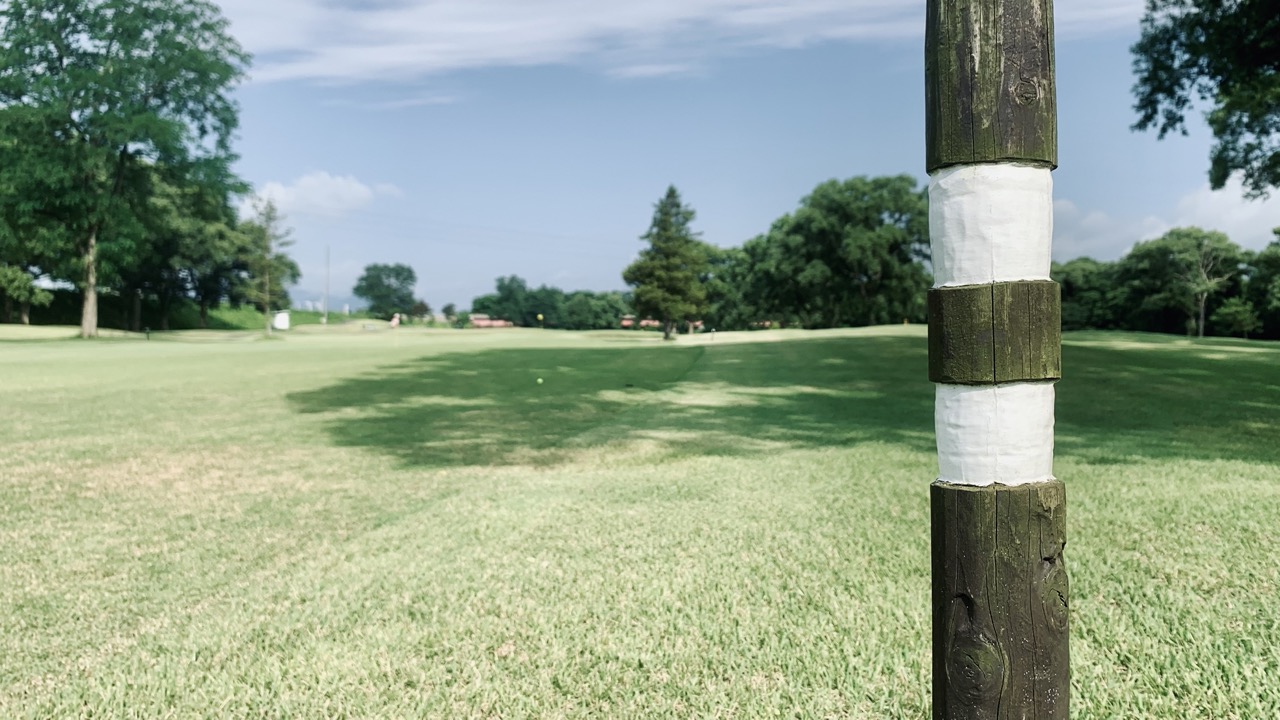 Photo: Distance marker (150 yards) on Hole 4 at Kitakami Shimin.
Photo: Distance marker (150 yards) on Hole 4 at Kitakami Shimin.
As this is a course running alongside a river and a road, on all holes the left side is out of bounds. Yet on the inside of the course, there are yellow stakes to indicate a one-penalty drop. This is for normal play and to help keep the pace of play. During the club championship, these yellow markers are changed to white markers signaling out of bounds.
Lunch Break
Standard for the golfing model in Japan, taking a mandatory lunch is… well, mandatory. On Saturdays and Sundays, this can sometimes be quite a long time to have lunch, do some putting on the practice greens, and also grab anything from the car that might be needed for the next nine holes. Here, the staff will maintain the procession of the carts of the group during the lunch break.
Before entering, be sure to clean the bottoms of shoes with the pressurized air gun, put your hat on the rack, and buy a food ticket at the machine. The menu isn’t as expansive as other places and with good reason. There are only three people managing the entire lunch operation! From cooking to cleaning to serving, it’s all done by three local ladies.
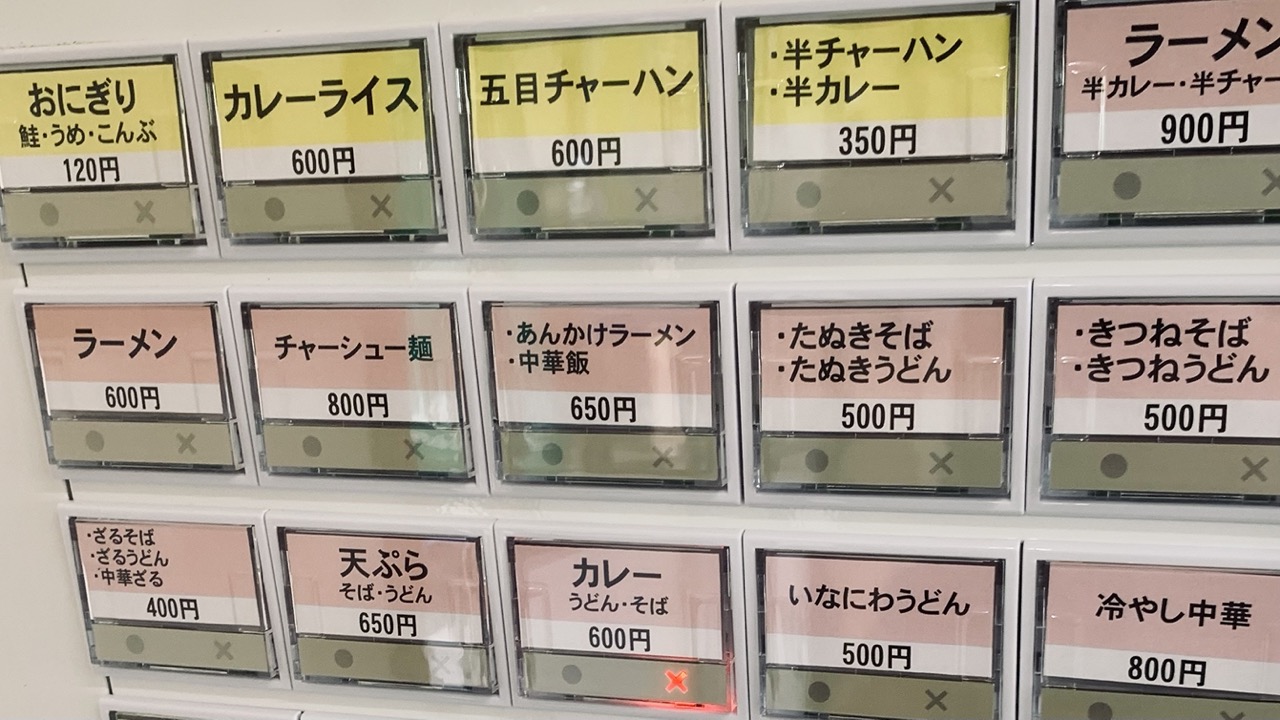 Photo: Some of the options for lunch on weekends at Kitakami Shimin.
Photo: Some of the options for lunch on weekends at Kitakami Shimin.
Unfortunately, the lunch service is only available on weekends. During the week, the dining area is open for use, but bringing a lunch to eat is necessary. There are some instant ramen and bread sold at the reception. For a weekday tee time, be sure to bring a lunch or make a stop at a nearby convenience store.
Post-Round
Kitakami Shimin is as barebones as it gets. After the last hole, return to the clubhouse where the staff will remove golf bags and chat about how the day went. The staff will check the cart for any belongings and then take time to clean the cart if necessary. From there, the bags will be put to the side for the next cart to come along.
There are two half-barrels filled with water for cleaning clubs and a grating to clean golf shoes. Along the grating are multiple brushes to clean shoes and clubs. Feel free to use the towels that were used on the course provided by Kitakami Shimin, or take a used towel from the used towel bin in the staff area to clean and dry clubs and shoes after washing.
There are no showers or locker rooms so after checking belongings, you are free to go! The staff will also give a friendly farewell and thank you.
Overall Experience
Kitakami Shimin gets to the heart of why golf is fun. Let’s take a look at some of the things that make Kitakami Shimin really shine compared to many fancier places.
Positives
- Low cost of entry
- Friendly and approachable staff
- Club focuses on the course
- Cart and walking options available
- Great course condition
- Early morning and afternoon starts
- Sociable members and regulars
- Great starter course
Negatives
- No locker rooms or showers
- No red-carpet service
- Extremely crowded on weekends
It’s hard to find where this club lacks other than the amenities of expensive clubs… which makes them expensive!
Clearly, Kitakami Shimin is the golf club for the average amateur, and that’s not to say it hasn’t produced talent. The 2024 Iwate Amateur Champion was from Kitakami Shimin, and a current Japan Tour player from Kitakami Shimin was The Crowns 2024 champion. It’s clear that Kitakami Shimin is a place that is accessible for newcomers and veterans alike to create a community that makes people want to love golf even more.
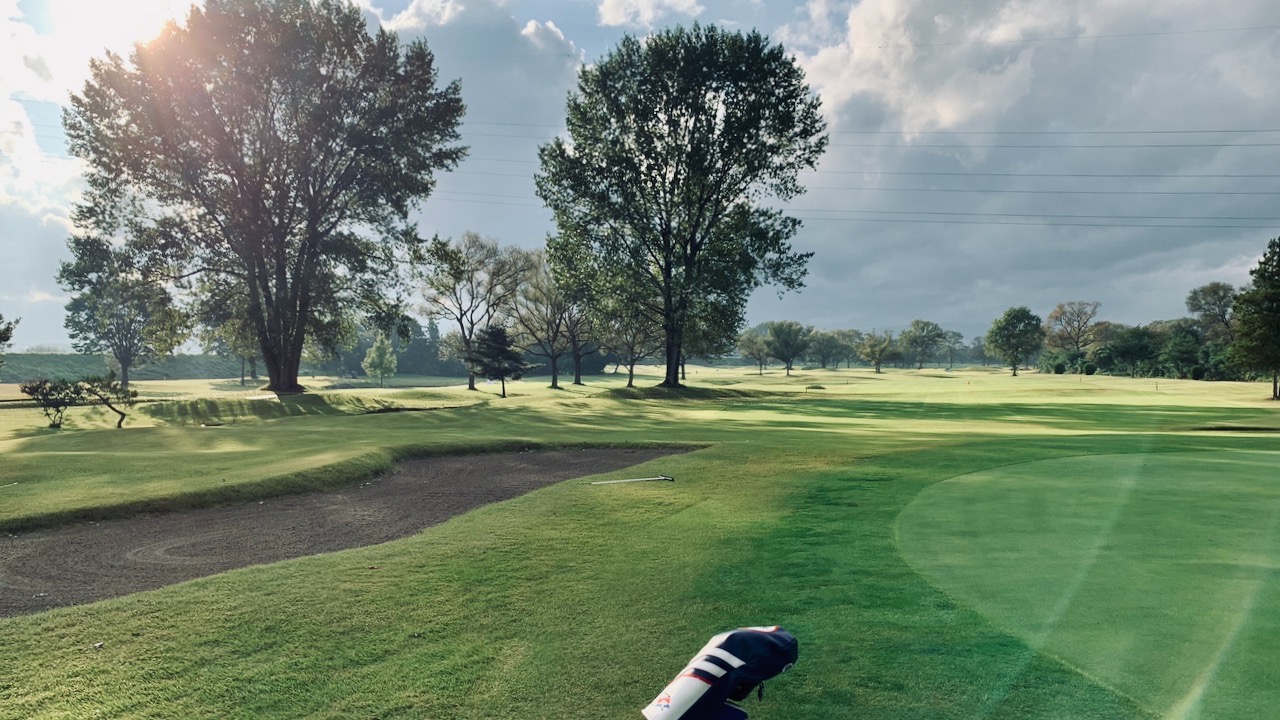 Photo: View of the course from the green on Hole 9 at Kitakami Shimin.
Photo: View of the course from the green on Hole 9 at Kitakami Shimin.
